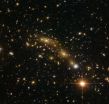(Press-News.org) Most research on human cancer genes have been focused on the regions of the coding genome (exons) that are to be translated in the form of amino acids thus proteins. But just before each gene, there is a regulatory region or activator which controls the expression and activity of the adjacent gene. Until now, very little was known of the role exerted such DNA fragment in tumor development.
An article published today in Nature in collaboration with the group of Manel Esteller, Director of Epigenetics and Cancer Biology, Bellvitge Biomedical Research Institute (IDIBELL), ICREA researcher and Professor of Genetics at the University of Barcelona, shows that these regions are also altered in cancer.
"The results of the Nature study reveal that regulatory regions preceding the gene as such, are variable, can mutate and be chemically modified, such as with DNA methylation in the cells of the tumor transformation" declares Esteller, co -author of the study.
"By studying a large cohort of patients with colon cancer, a tumor type very common in our society, we realized that these areas of control genes were so injured as genes and caused an altered function of the target gene. Our work shows a new list of genes involved in cancer development, hitherto unknown, which are abhorrent simply by poor control of these promoter regions. "
These findings may have a profound importance in understanding the biology of cancer and stress the need not only to focus on the region of the classical genes (exome), but also wonder about the regulatory regions of oncogenes and tumor suppressor genes .
INFORMATION:
SKU
Ongen H, Andersen CL, Bramsen JB, Oster B, Rasmussen MH, Ferreira PG, Sandoval J, Vidal E, Whiffin N, Planchon A, PADIOLEAU I Bielser D, Romano L, Tomlinson I, Houlston RS, Esteller M, Ørntoft TF , Dermitzakis ET. Putative cis-regulatory drivers in colorectal cancer. Nature, DOI: 10.1038/nature13602, 2014
New regions of genetic material are involved in the development of colon cancer
2014-07-24
ELSE PRESS RELEASES FROM THIS DATE:
Nano-sized chip 'sniffs out' explosives far better than trained dogs
2014-07-24
Security forces worldwide rely on sophisticated equipment, trained personnel, and detection dogs to safeguard airports and other public areas against terrorist attacks. A revolutionary new electronic chip with nano-sized chemical sensors is about to make their job much easier.
The groundbreaking nanotechnology-inspired sensor, devised by Prof. Fernando Patolsky of Tel Aviv University 's School of Chemistry and Center for Nanoscience and Nanotechnology, and developed by the Herzliya company Tracense, picks up the scent of explosives molecules better than a detection dog's ...
Detecting concussion-related brain disease in its earliest stages
2014-07-24
Autopsies have shown that some high-profile athletes who suffered repeated blows to the head during their careers have unusual protein clumps in their brains. Those clumps suggest the athletes had a disease called chronic traumatic encephalopathy (CTE). Now, scientists are working on tests that might be able to detect CTE in its earliest stages, according to an article in Chemical & Engineering News (C&EN), the weekly news magazine of the American Chemical Society.
In the article, Lauren Wolf, a senior editor at C&EN, explains that many of these athletes struggled with ...
Dead-body-feeding larvae useful in forensic investigations
2014-07-24
VIDEO:
This image depicts Chrysomya megacephala larvae on decomposing fish.
Click here for more information.
Non-biting blow fly Chrysomya megacephala is commonly found in dead bodies and is used in forensic investigations to determine the time of death, referred to as the post mortem interval. A report of synanthropic derived form of C. megacephala from Tamil Nadu is provided for the first time based on morphological features and molecular characterization through generation ...
Nearly 50 years of lemur data now available online
2014-07-24
VIDEO:
Duke Lemur Center had made 48 years of primate data available online.
Click here for more information.
DURHAM, N.C. -- A 48-year archive of life history data for the world's largest and most diverse collection of endangered primates is now digital and available online. The Duke Lemur Center database allows visitors to view and download data for more than 3600 animals representing 27 species of lemurs, lorises and galagos -- distant primate cousins who predate monkeys ...
New mass map of a distant galaxy cluster is the most precise yet
2014-07-24
Astronomers using the NASA/ESA Hubble Space Telescope have mapped the mass within a galaxy cluster more precisely than ever before. Created using observations from Hubble's Frontier Fields observing programme, the map shows the amount and distribution of mass within MCS J0416.1-2403, a massive galaxy cluster found to be 160 trillion times the mass of the Sun. The detail in this mass map was made possible thanks to the unprecedented depth of data provided by new Hubble observations, and the cosmic phenomenon known as strong gravitational lensing.
Measuring the amount and ...
University of Delaware researcher describes new approach for creating organic zeolites
2014-07-24
Yushan Yan, Distinguished Professor of Engineering at the University of Delaware, is known worldwide for using nanomaterials to solve problems in energy engineering, environmental sustainability and electronics.
His early academic work focused on zeolites, porous rock with a well-defined, crystalline structure. At the atomic scale, their pore size is so precisely decided that zeolites can separate molecules with size differences of merely a fraction of an angstrom (one-tenth of a nanometer), making them useful to the chemical and petroleum industries as molecular sieves ...
Background TV can be bad for kids
2014-07-24
Parents, turn off the television when your children are with you. And when you do let them watch, make sure the programs stimulate their interest in learning.
That's the advice arising from University of Iowa researchers who examined the impact of television and parenting on children's social and emotional development. The researchers found that background television—when the TV is on in a room where a child is doing something other than watching—can divert a child's attention from play and learning. It also found that non-educational programs can negatively affect children's ...
Wireless home automation systems reveal more than you would think about user behavior
2014-07-24
This news release is available in German.
Home automation systems that control domestic lighting, heating, window blinds or door locks offer opportunities for third parties to intrude on the privacy of the inhabitants and gain considerable insight into their behavioral patterns. This is the conclusion reached by IT security expert Christoph Sorge and his research team at Saarland University. Even data transmitted from encrypted systems can provide information useful to potential burglars. Professor Sorge, who holds the juris Professorship in Legal Informatics ...
Natural products from plants protect skin during cancer radiotherapy
2014-07-24
Radiotherapy for cancer involves exposing the patient or their tumor more directly to ionizing radiation, such as gamma rays or X-rays. The radiation damages the cancer cells irreparably. Unfortunately, such radiation is also harmful to healthy tissue, particularly the skin over the site of the tumor, which is then at risk of hair loss, dermatological problems and even skin cancer. As such finding ways to protect the overlying skin are keenly sought.
Writing in the International Journal of Low Radiation, Faruck Lukmanul Hakkim of the University of Nizwa, Oman and Nagasaki ...
Identified a key molecule in flies that adjusts energy use under starvation conditions
2014-07-24
Most scientific literature devoted to the protein p53 refers to cancer biology, and the functions of this molecule as a tumour suppressor have been described in detail. Furthermore, also in cancer biology, it is known that p53 inhibits the metabolic pathways of tumour cells in order to block their metabolism and prevent their rapid growth and proliferation.
The most innovative research on p53 attempts to unveil its functions in the management of energy stores and nutrients in healthy cells. Recent studies with cell cultures have demonstrated that p53 is activated in response ...






